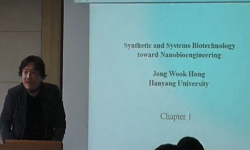저자들은 국내에서 처음으로 중합효소연쇄반응 검사를 통하여 B. microti에 의한 인체 바베시오시를 진단하였으며, atovaquone과 azithromycin 병합요법을 사용하여 치유한 1예를 경험하였기에 문헌...
http://chineseinput.net/에서 pinyin(병음)방식으로 중국어를 변환할 수 있습니다.
변환된 중국어를 복사하여 사용하시면 됩니다.
- 中文 을 입력하시려면 zhongwen을 입력하시고 space를누르시면됩니다.
- 北京 을 입력하시려면 beijing을 입력하시고 space를 누르시면 됩니다.

중합효소연쇄반응을 통해 확진되고 Atovaquone과 Azithromycin으로 치료한 Human Babesiosis 1예 = A Case of Human Babesiosis Confirmed by Polymerase Chain Reaction and Treated with Atovaquone and Azithromycin
한글로보기https://www.riss.kr/link?id=A76524262
-
저자
윤기태 (연세대학교 의과대학 내과학교실) ; 김연아 (연세대학교 의과대학 내과학교실) ; 구남수 (연세대학교 의과대학 내과학교실) ; 김준형 (연세대학교 의과대학 내과학교실) ; 정세진 (연세대학교 의과대학 내과학교실) ; 김홍정 (연세대학교 의과대학 내과학교실) ; 송경호 (연세대학교 의과대학 내과학교실) ; 최유경 (연세대학교 의과대학 내과학교실) ; 신소연 (연세대학교 의과대학 내과학교실, 에이즈 연구소) ; 김영근 (연세대학교 의과대학 내과학교실, 에이즈 연구소) ; 김명수 (연세대학교 의과대학 내과학교실, 에이즈 연구소) ; 박윤선 (연세대학교 의과대학 내과학교실, 에이즈 연구소) ; 최준용 (연세대학교 의과대학 내과학교실, 에이즈 연구소) ; 송영구 (연세대학교 의과대학 내과학교실, 에이즈 연구소) ; 김준명 (연세대학교 의과대학 내과학교실, 에이즈 연구소)
- 발행기관
- 학술지명
- 권호사항
-
발행연도
2006
-
작성언어
Korean
- 주제어
-
KDC
510
-
등재정보
KCI등재
-
자료형태
학술저널
- 발행기관 URL
-
수록면
300-303(4쪽)
- 제공처
-
0
상세조회 -
0
다운로드
부가정보
국문 초록 (Abstract)
저자들은 국내에서 처음으로 중합효소연쇄반응 검사를 통하여 B. microti에 의한 인체 바베시오시를 진단하였으며, atovaquone과 azithromycin 병합요법을 사용하여 치유한 1예를 경험하였기에 문헌고찰과 함께 보고하는 바이다.
다국어 초록 (Multilingual Abstract)
Human babesiosis is a tick-borne infectious disease caused by Babesia species. The clinical diagnosis is difficult because of nonspecific symptoms like flu. Rapid diagnosis of human babesiosis is microscopic examination in peripheral blood smear (Giem...
Human babesiosis is a tick-borne infectious disease caused by Babesia species. The clinical diagnosis is difficult because of nonspecific symptoms like flu. Rapid diagnosis of human babesiosis is microscopic examination in peripheral blood smear (Giemsa-stain) which reveals characteristic forms of an intracellular quadruplet parasite. But differentiation between Babesia microti and Plasmodium species can be quite difficult because of the morphologic similarity. We experienced a case of human babesiosis. The patient was a 62-year old Korean male who had been in New Jersey, U.S.A for 2 months. We initially diagnosed as malaria infection because the peripheral blood smear revealed intracellular single ring form organism. But the patient was not improved significantly by the treatment with chloroquine regimen. Finally we confirmed human babesiosis by polymerase chain reaction for Babesia microti. We treated the patient successfully with a regimen of atovaquone and azithromycin which has fewer adverse reactions than a regimen of clindamycin and quinine.
동일학술지(권/호) 다른 논문
-
삼차 의료기관에서 전산화 제한 항생제 사용 및 관리 프로그램의 유용성에 관한 연구
- 대한감염학회
- 김정연
- 2006
- KCI등재
-
Vancomycin 내성 장구균에 의한 세균뇨의 역학과 임상적 중요성
- 대한감염학회
- 최원석
- 2006
- KCI등재
-
호중구 감소성 발열을 보인 고형암 환자의 임상양상 및 그람양성균 균혈증의 위험인자
- 대한감염학회
- 구남수
- 2006
- KCI등재
-
건강한 성인에서 인플루엔자 백신의 근육내 주사와 절반 용량 피부내 주사의 면역원성과 안전성 비교
- 대한감염학회
- 조유미
- 2006
- KCI등재




 RISS
RISS


